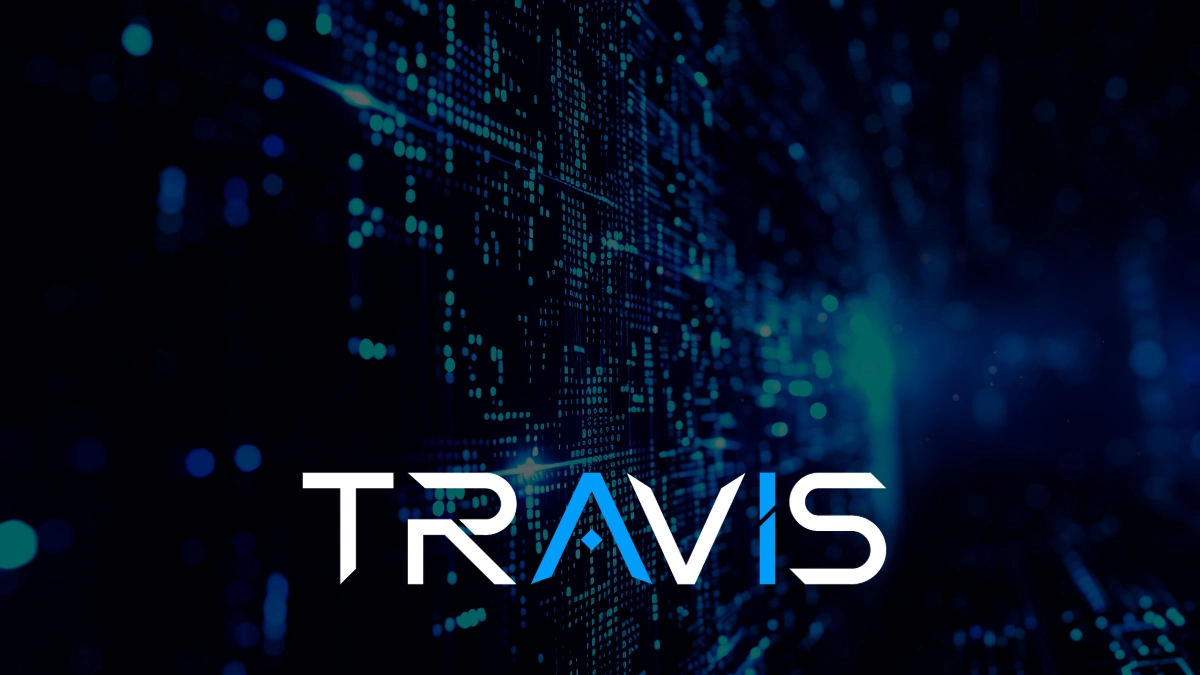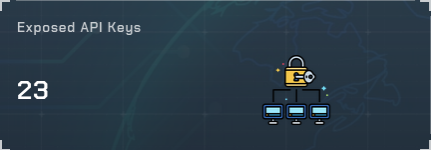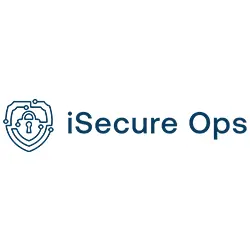Table of Contents:
- Introduction: The Growing Threat of Insecure API Endpoints
- Understanding API Security Risks in Modern Cybersecurity
- The Impact of Insecure APIs on External Attack Surface Management
- Common Vulnerabilities in API Endpoints
- TRaViS: A Comprehensive Solution for API Security
- How TRaViS Addresses Key API Security Challenges
- Best Practices for Securing API Endpoints
- Industry Insights: The Growing Importance of API Security
- The Future of API Security in Cybersecurity
- Conclusion: Empowering Organizations with TRaViS
- FAQs About API Security and TRaViS
Introduction: The Growing Threat of Insecure API Endpoints

In today's interconnected digital landscape, Application Programming Interfaces (APIs) have become the backbone of modern software architecture. They enable seamless integration between different systems and applications, fostering innovation and efficiency. However, this increased reliance on APIs has also opened up new avenues for cybercriminals to exploit.
Insecure API Endpoints
Insecure API endpoints have emerged as a significant security risk, posing a substantial threat to organizations' digital assets and sensitive data.As we delve into the world of cybersecurity and external attack surface management, it's crucial to understand the risks associated with insecure APIs and explore effective solutions. This article will examine the challenges posed by vulnerable API endpoints and introduce TRaViS, an innovative solution designed to address these security concerns.
Understanding API Security Risks in Modern Cybersecurity

APIs serve as the connective tissue of our digital ecosystem, allowing different software components to communicate and share data. However, this critical role also makes them an attractive target for malicious actors. Insecure API endpoints can lead to a range of security issues, including:
- Data breaches
- Unauthorized access to sensitive information
- Manipulation of backend systems
- Distributed Denial of Service (DDoS) attacks
- Business logic exploitation
The rapid adoption of cloud computing and micro-services architecture has further amplified these risks. As organizations migrate their on-premises data centers to cloud networks, they often overlook the security implications of exposing APIs to the public internet
The Impact of Insecure APIs on External Attack Surface Management

External Attack Surface Management (EASM) has become a critical component of modern cybersecurity strategies. It involves identifying, analyzing, and managing an organization's external-facing digital assets and potential vulnerabilities. Insecure API endpoints significantly expand an organization's attack surface, creating new entry points for cyber-criminals to exploit.
The challenges in managing API security within the context of EASM include:
- Visibility: Many organizations lack a comprehensive inventory of their APIs, making it difficult to assess and manage associated risks.
- Complexity: The dynamic nature of modern applications and frequent updates can lead to unintended security gaps in API implementations.
- Scale: Large enterprises may have hundreds or thousands of APIs, making manual security management impractical.
- Third-party risks: Organizations often rely on external APIs, which can introduce additional security vulnerabilities beyond their direct control.
TRaViS: A Comprehensive Solution for API Security

TRaViS (Threat Response and Vulnerability Intelligent System) is an innovative solution designed to address the complex challenges of API security in the modern cybersecurity landscape. By leveraging advanced technologies and a holistic approach to security, TRaViS offers a comprehensive framework for securing API endpoints and managing external attack surfaces.Key features of TRaViS include:
- Automated API discovery and inventory: TRaViS continuously scans and catalogs an organization's API endpoints, providing real-time visibility into the API landscape.
- Intelligent vulnerability assessment: Using machine learning algorithms, TRaViS analyzes API configurations and traffic patterns to identify potential security weaknesses.
- Continuous monitoring and threat detection: The system monitors API activity in real-time, detecting and alerting on suspicious behavior or potential attacks.
- Integration with existing security infrastructure: TRaViS seamlessly integrates with an organization's existing security tools and processes, enhancing overall cybersecurity posture.
- Compliance management: The solution helps organizations maintain compliance with various regulatory requirements by ensuring API security aligns with industry standards.
Common Vulnerabilities in API Endpoints

To effectively address API security, it's essential to understand the most common vulnerabilities that affect API endpoints:
- Broken authentication: Weak or improperly implemented authentication mechanisms can allow unauthorized access to API resources.
- Lack of rate limiting: Without proper rate limiting, APIs can be vulnerable to brute force attacks or denial of service.
- Insufficient input validation: Failing to properly validate and sanitize input data can lead to injection attacks and other security issues.
- Improper error handling: Overly detailed error messages can reveal sensitive information about the API's internal workings.
- Insecure direct object references: Improperly protected API endpoints may allow attackers to access or manipulate unauthorized resources.
- Lack of encryption: Transmitting sensitive data over unencrypted channels can expose it to interception and tampering.
- Mis-configured cloud storage: Improperly configured cloud storage linked to APIs can lead to data leaks and unauthorized access
How TRaViS Addresses Key API Security Challenges

TRaViS tackles the major security challenges associated with insecure API endpoints through a multi-faceted approach:
- Enhanced visibility: By automatically discovering and cataloging APIs, TRaViS provides organizations with a comprehensive view of their API landscape, reducing the risk of "shadow APIs" that may be overlooked.
- Proactive vulnerability management: The system's intelligent assessment capabilities help identify potential vulnerabilities before they can be exploited, allowing for timely remediation.
- Continuous threat detection: TRaViS's continuous monitoring capabilities enable rapid detection and response to potential security incidents, minimizing the impact of attacks.
- Scalable security management: The automated nature of TRaViS allows organizations to effectively manage API security at scale, even in complex enterprise environments.
- Third-party risk mitigation: By providing insights into the security posture of external APIs, TRaViS helps organizations manage risks associated with third-party integrations.
Best Practices for Securing API Endpoints

While TRaViS provides a robust solution for API security, organizations should also implement best practices to further enhance their security posture:
- Implement strong authentication: Use industry-standard authentication protocols like OAuth 2.0 and enforce multi-factor authentication for sensitive APIs.
- Apply fine-grained access control: Implement detailed authorization checks to ensure users can only access the resources they're entitled to.
- Encrypt all communications: Use HTTPS for all API traffic to protect data in transit.
- Validate and sanitize inputs: Implement thorough input validation to prevent injection attacks and other security vulnerabilities.
- Implement rate limiting: Apply rate limiting to prevent abuse and ensure fair usage of API resources.
- Use proper error handling: Implement custom error messages that provide necessary information without revealing sensitive details about the API's internal workings.
- Regularly update and patch: Keep API frameworks and dependencies up to date with the latest security patches.
- Conduct regular security audits: Perform regular security assessments of your API implementations to identify and address potential vulnerabilities.
Industry Insights: The Growing Importance of API Security

Recent data from industry leaders underscores the critical nature of API security in today's digital landscape:
- Gartner's API Security Forecast:
According to Gartner's "Market Guide for API Trust, Risk and Security Management" report, by 2026, 90% of web-enabled applications will have more surface area for attack in the form of exposed APIs rather than the UI, up from 40% in 2021. This highlights the urgent need for robust API security solutions like TRaViS. - Increasing API Attacks:
The "State of API Security Report" by Salt Security revealed that API attack traffic grew 681% in 2021, while overall API traffic increased 321%. This disproportionate growth in attacks emphasizes the attractiveness of APIs as targets for cyber-criminals. - Healthcare Industry Vulnerabilities:
A comprehensive review of API security challenges in the healthcare industry identified significant vulnerabilities, including complex authentication issues, data leakage risks, and weaknesses in access control. These findings underscore the need for advanced API security measures, especially in sensitive sectors like healthcare. - Serverless Computing and API Security:
Datadog's "State of Serverless" report indicates a growing adoption of serverless computing, which heavily relies on APIs. This trend further amplifies the importance of robust API security measures in modern cloud-native architectures. - AI and Machine Learning in API Security:
The Stanford University Institute for Human-Centered Artificial Intelligence's "Artificial Intelligence Index Report 2023" highlights the increasing role of AI in cybersecurity, including API protection. This aligns with TRaViS's use of advanced machine learning algorithms for threat detection and vulnerability assessment. - Economic Impact of API Breaches:
A report by Imperva Research Labs found that 42% of organizations have experienced an API security incident in the past 12 months, with 67% of those resulting in a data breach. The average cost of an API security incident was estimated at $1.2 million per organization.
Growing Importance of API Security
These industry insights demonstrate the growing importance of API security and the need for comprehensive solutions like TRaViS. As organizations continue to expand their digital footprint and rely more heavily on APIs, the demand for advanced API security measures will only increase.
The Future of API Security in Cybersecurity

As the digital landscape continues to evolve, API security will play an increasingly critical role in overall cybersecurity strategies. Some emerging trends and considerations include:
- AI and machine learning in API security: Advanced AI algorithms will enhance threat detection and automate security responses.
- Zero Trust architecture: The adoption of Zero Trust principles will reshape API security, requiring continuous authentication and authorization.
- API-first security: Organizations will increasingly adopt an API-first approach to security, integrating security considerations from the earliest stages of API development.
- Quantum-resistant cryptography: As quantum computing advances, API security solutions will need to implement quantum-resistant encryption methods.
- Regulatory compliance: Evolving data protection regulations will continue to impact API security requirements and practices.
Conclusion: Empowering Organizations with TRaViS

APIs form the foundation of digital innovation, securing these critical interfaces is paramount. Insecure API endpoints pose a significant risk to organizations, potentially exposing sensitive data and systems to malicious actors. TRaViS offers a comprehensive solution to these challenges, providing organizations with the tools and capabilities needed to secure their API landscape effectively.
By combining automated discovery, intelligent vulnerability assessment, and continuous monitoring, TRaViS empowers organizations to take a proactive stance in API security. As the threat landscape continues to evolve, solutions like TRaViS will play a crucial role in helping businesses navigate the complex world of cybersecurity and external attack surface management.
Implementing TRaViS, along with following best practices for API security, can significantly reduce an organization's risk exposure and enhance its overall security posture. As we look to the future, the importance of robust API security will only continue to grow, making solutions like TRaViS an essential component of any comprehensive cybersecurity strategy.
FAQs About API Security and TRaViS
- Q: What are the most common types of API attacks?
A: Common API attacks include injection attacks, broken authentication, excessive data exposure, lack of resources and rate limiting, and broken function level authorization. - Q: How does TRaViS differ from traditional API security solutions?
A: TRaViS offers a more comprehensive and automated approach, combining API discovery, vulnerability assessment, and continuous monitoring in a single platform. - Q: Can TRaViS integrate with existing security tools?
A: Yes, TRaViS is designed to integrate seamlessly with an organization's existing security infrastructure and tools. - Q: How often should API security assessments be conducted?
A: API security assessments should be conducted regularly, ideally on a continuous basis. TRaViS enables ongoing monitoring and assessment of API security. - Q: What steps can developers take to improve API security?
A: Developers can improve API security by implementing strong authentication, validating inputs, using encryption, implementing rate limiting, and following secure coding practices.
Ready to secure your API endpoints and strengthen your cybersecurity posture? Contact us today to learn more about how TRaViS can help protect your organization from evolving cyber threats.











